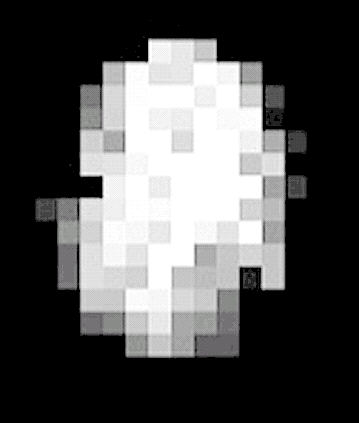I arrived at Binbrook a few minutes after 7, to see one car already there. I could see Orion, although the belt stars were a bit faint, and mars and Sirius were there.
Despite dire warnings of a cloudy night, your HAA membership again demonstrated their unbounded enthusiasm, as they gathered at Binbrook for a 7:30 setup, expecting asteroid 2007 TU24 to go scooting by. Eventually there were 7 cars and 8 people.
I was planning to just set up binoculars, as rain was expected, but when so many members showed up, and Ed started setting up the BWS, i also set up the GWS. Of course, we realized that binoculars just won’t fish up a 11.6 magnitude asteroid. The GWS can see down to mag 16 comfortably, so the GWS it was.
We were well rewarded, but not as expected.
Seeing was steady, and Mars turned out to be the big attraction. Right through clouds that obscured most of orion, we could see mars, shining steadily. It was the steadiest I had ever seen mars, and it withstood 250x magnification.
No less than 6 scopes were soon taking advantage of this opportunity to view Mars, and we agreed we could see surface features on the planet, which withstood the same descriptions from multiple observers.
I saw several dark spots and lines on the orange disk of mars, and wished I had a 2x Barlow to get
even closer. Voila! Other eyepieces were at the ready, and on offer.
Don played the Telescope Clinic video during a short break in the action.
For a white square on the CSC, in the face of an impending rainstorm ferocious enough to keep meteorologists away, we got remarkably clear spots. I am not saying the whole sky was clear, but the sucker holes were big enough to shine a scope through. It was well worth the drive to Binbrook.
We picked up the Plieades and looked for the elephant. The GWS magnifies it too much, so it will have to wait for another time.
Using ephemerids, Heather set up her scope to shine in the right direction to pick up the asteroid scooting by. Alas, there were clouds in that direction. By 10 PM we decided to pack up and head for Tim’s. Horton, that is.
While putting things away, the sky eventually did clear up in the direction we needed. We could see all kinds of stars in there. We broke out the binoculars, and I made motions to set the GWS back up, (I was only kidding, really)… but that was enough of that.
An hour and a half at Tims and we were on our way. Turns out there’s a brisk re-sale market for HAA calendars too!
Here’s a photo from the evening.
Update from Don Pullen – 30Jan08
From APOD (http://antwrp.gsfc.nasa.gov/apod/astropix.html), here’s a radar image of what we missed.

“Asteroid 2007 TU24 passed by the Earth yesterday, posing no danger. The space rock, estimated to be about 250 meters across, coasted by just outside the orbit of Earth’s Moon. The passing was not very unusual — small rocks strike Earth daily, and in 2003 a rock the size of a bus passed inside the orbit of the Moon, being detected only after passing. TU24 was notable partly because it was so large. Were TU24 to have struck land, it might have caused a magnitude seven earthquake and left a city-sized crater. A perhaps larger danger would have occurred were TU24 to have struck the ocean and raised a large tsunami. This radar image was taken two days ago. The Arecibo Radio Telescope in Puerto Rico broadcast radar that was reflected by the asteroid and then recorded by the Byrd Radio Telescope in Green Bank, West Virginia. The resulting image shows TU24 to have an oblong and irregular shape. TU24 was discovered only three months ago, indicating that other potentially hazardous asteroids might lurk in our Solar System currently undetected. Objects like TU24 are hard to detect because they are so faint and move so fast. Humanity’s ability to scan the sky to detect, catalog, and analyze such objects has increased notably in recent years.”
